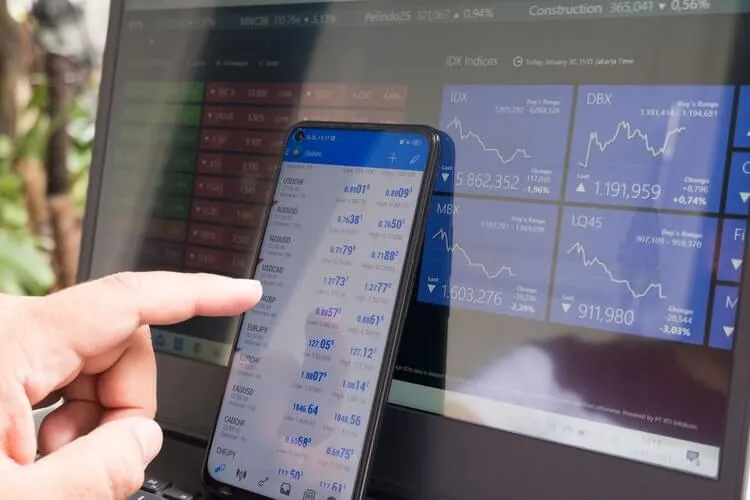Japanese vs Indian Currency – Which One Is Stronger
Currently, 1 Japanese Yen (JPY) is equal to 0.67 Rupees. Yen is the executive legal tender of Japan and the Indian National Rupee (INR) of India. It is the third most favoured exchange medium in the currency market after USD and Euro. The moderate token worth of JPY is the result of World War Two. Expenses during the war resulted in huge expansion; therefore, when the war got over, the rate of JPY was 360 yen to 1 USD.

Currently, 1 Japanese Yen (JPY) is equal to 0.67 Rupees. Yen is the executive legal tender of Japan and the Indian National Rupee (INR) of India. It is the third most favoured exchange medium in the currency market after USD and Euro. The moderate token worth of JPY is the result of World War Two. Expenses during the war resulted in huge expansion; therefore, when the war got over, the rate of JPY was 360 yen to 1 USD.
Although Japan’s export resilience is in consumer products instead of goods and services, the concept remains the same. A massive current account surplus as a result of merchandise exports of automobiles, camcorders, and digital equipment has customarily contributed to the high availability of yen by immigrants to charge for these items. The yen is indeed a secure asset though currency traders regard it as such. During hardships, traders gravitate towards the JPY because industry ways have enlightened them to do these things.
The INR is subdivided into 100 paise, but in 2019, Rs 1 are the most commonly used. In India, the RBI is the head of currency lending. Each Rupee has been under mounting strain in recent days as a result of the sharp increase in Covid-19 circumstances and the RBI’s unveiling last year that it would then retain a relatively loose monetary policy and incorporate cash flow via the Treasury Notes Acquisition Programme (G-SAP) — beginning with Rupees. During 2020, the INR averaged Rs 74.10 to US dollars. “Humans anticipate the rupee to move slightly lower in 2021, and we’ve lowered overall absolute principles to Rs 75.50/USD from Rs 77.00/Dollars to compensate again for the impact of continued USD weakness,” Ratings added.
The rupee has established a powerful recovery, recovering to be Asia’s best-performing currencies after prospects of an end to India’s viral problem. In May, India’s rupee surged 1.7 per cent against the dollar, outperforming all global counterparts, as the country’s hourly illnesses fell sharply following reaching a new high. The rupees do have the greatest carrying values in Asia. The rupee’s recovery underlines India’s attempts to combat the virus, with regional shutdowns assisting in reducing monthly infections, which were the most globally in April. Nonetheless, despite the negative effect on shipments at a time when the world is recovering from a downturn, the federal reserve could be apprehensive about a larger economy. JPY is the financial sign or acronym for the Japanese yen (JPY), which is the country’s coinage. Following the dollar, euros, and Pound sterling, the Japanese yen too is commonly used as a medium of exchange.
Conclusion:
Thus we have stated about the currencies of India and Japan and their benefits and disadvantages. I hope this is helpful.
Remember, never travel without travel insurance! And never overpay for travel insurance!
I use HeyMondo. You get INSTANT quotes. Super cheap, they actually pay out, AND they cover almost everywhere, where most insurance companies don't (even places like Central African Republic etc!). You can sign-up here. PS You even get 5% off if you use MY LINK! You can even sign up if you're already overseas and traveling, pretty cool.
Also, if you want to start a blog...I CAN HELP YOU!
Also, if you want to start a blog, and start to change your life, I'd love to help you! Email me on johnny@onestep4ward.com. In the meantime, check out my super easy blog post on how to start a travel blog in under 30 minutes, here! And if you just want to get cracking, use BlueHost at a discount, through me.
Also, (if you're like me, and awful with tech-stuff) email me and my team can get a blog up and running for you, designed and everything, for $699 - email johnny@onestep4ward.com to get started.
Do you work remotely? Are you a digital nomad/blogger etc? You need to be insured too.
I use SafetyWing for my digital nomad insurance. It covers me while I live overseas. It's just $10 a week, and it's amazing! No upfront fees, you just pay week by week, and you can sign up just for a week if you want, then switch it off and on whenever. You can read my review here, and you can sign-up here!













 As you know, blogging changed my life. I left Ireland broke, with no plan, with just a one-way ticket to Thailand
and no money. Since then, I started a blog, then a digital media company, I've made
more than $1,500,000 USD, bought 4 properties and visited (almost) every country in the world. And I did it all from my laptop as I
travel the world and live my dream. I talk about how I did it, and how you can do it too, in my COMPLETELY FREE
Ebook, all 20,000
words or so. Just finish the process by putting in your email below and I'll mail it right out to you immediately. No spam ever too, I promise!
As you know, blogging changed my life. I left Ireland broke, with no plan, with just a one-way ticket to Thailand
and no money. Since then, I started a blog, then a digital media company, I've made
more than $1,500,000 USD, bought 4 properties and visited (almost) every country in the world. And I did it all from my laptop as I
travel the world and live my dream. I talk about how I did it, and how you can do it too, in my COMPLETELY FREE
Ebook, all 20,000
words or so. Just finish the process by putting in your email below and I'll mail it right out to you immediately. No spam ever too, I promise!
